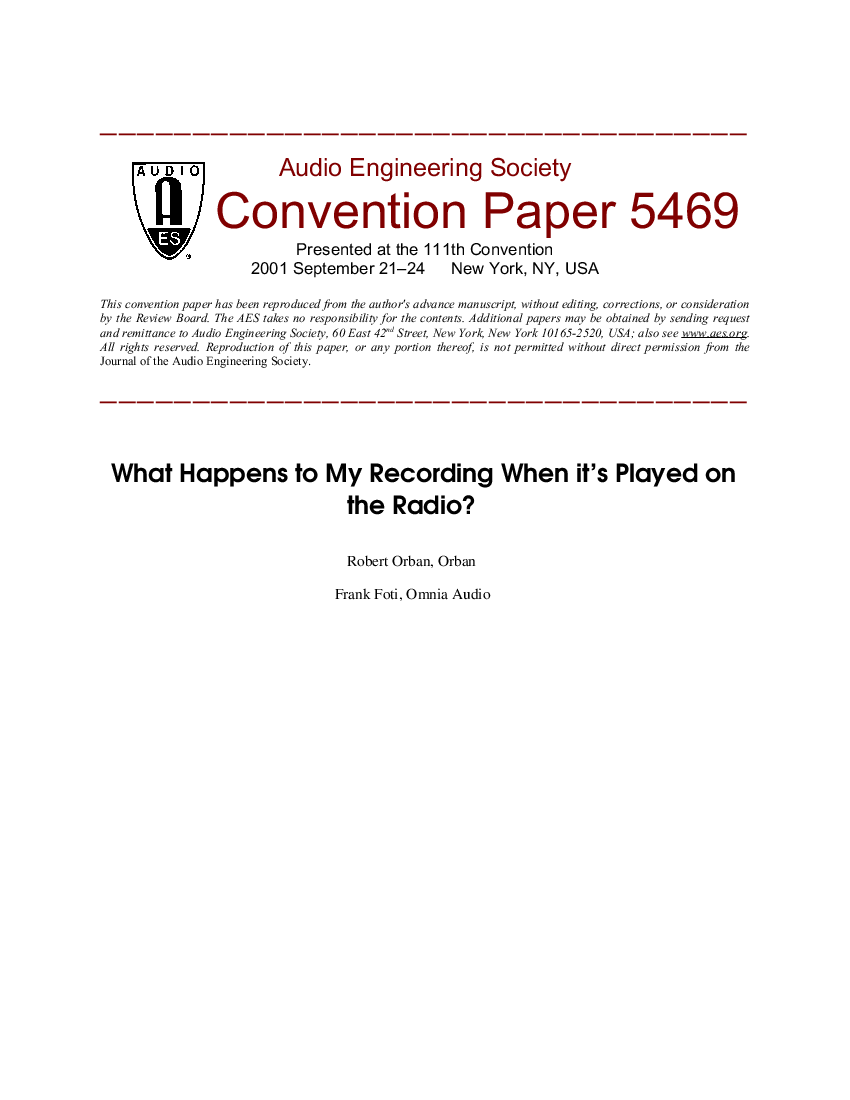Home / Publications / E-library page
You are currently logged in as an
Institutional Subscriber.
If you would like to logout,
please click on the button below.
Home / Publications / E-library page
Only AES members and Institutional Journal Subscribers can download
Few people in the record industry really know how a radio station processes its material before it hits the FM airwaves. This article`s purpose is to remove the many myths and misconceptions surrounding this arcane art. Every radio station uses a transmission audio processor in front of its transmitter. The processor`s most important function is to control the peak modulation of the transmitter to the legal requirements of the regulatory body in each station`s nation. However, very few stations use a simple peak limiter for this function. Instead, they use more complex audio chains. These can accurately constrain peak modulation while significantly decreasing the peak-to-average ratio of the audio. This makes the station sound louder within the allowable peak modulation.
Author (s): Foti, Frank; Orban, Robert
Affiliation:
Omnia Audio
(See document for exact affiliation information.)
AES Convention: 111
Paper Number:5469
Publication Date:
2001-11-06
Import into BibTeX
Session subject:
Microphones
Permalink: https://aes2.org/publications/elibrary-page/?id=9812
(711KB)
Click to purchase paper as a non-member or login as an AES member. If your company or school subscribes to the E-Library then switch to the institutional version. If you are not an AES member Join the AES. If you need to check your member status, login to the Member Portal.

Foti, Frank; Orban, Robert; 2001; What Happens to My Recording When it's Played on the Radio? [PDF]; Omnia Audio; Paper 5469; Available from: https://aes2.org/publications/elibrary-page/?id=9812
Foti, Frank; Orban, Robert; What Happens to My Recording When it's Played on the Radio? [PDF]; Omnia Audio; Paper 5469; 2001 Available: https://aes2.org/publications/elibrary-page/?id=9812